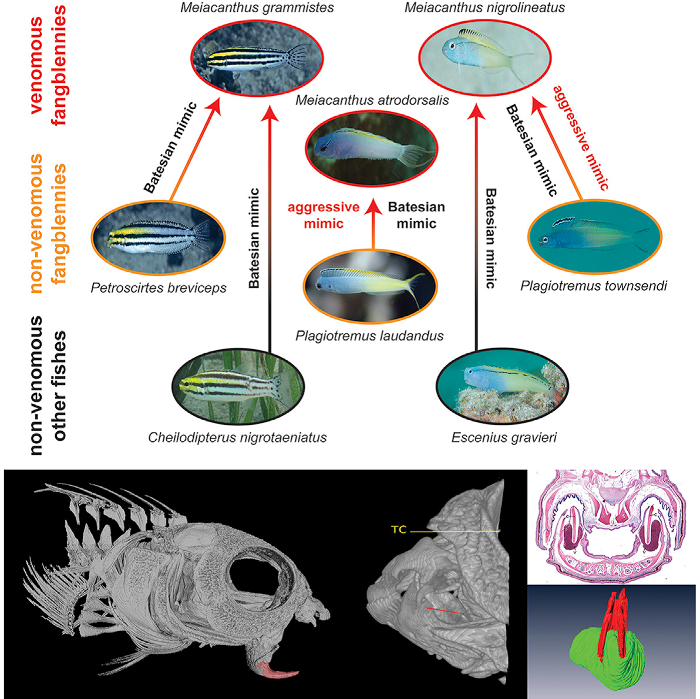
The Evolution of Fangs, Venom, and Mimicry Systems in Blenny Fishes
Venomous animals serve as models for a variety of mimicry types. Michael Richardson (IBL) and his international colleagues find that a group of fishes (called fangblennies) evolved venom after the origin of their venom-delivering fangs.
Venom systems have evolved on multiple occasions across the animal kingdom, and they can act as key adaptations to protect animals from predators. Consequently, venomous animals serve as models for a rich source of mimicry types, as non-venomous species benefit from reductions in predation risk by mimicking the coloration, body shape, and/or movement of toxic counterparts. The frequent evolution of such deceitful imitations provides notable examples of phenotypic convergence and are often invoked as classic exemplars of evolution by natural selection.
Michael Richardson, Jeroen Visser (IBL) and colleagues from LUMC and worldwide, reported in the prestigious journal “Current Biology”, the venom causes a drastic drop in blood pressure in the prey, as well as other effects, and that some of these effects may be mediated by the opioid receptors that morphine and heroine also interact with. The drop in blood pressure may one day mean that blenny venom could yield new drugs for treating high blood pressure, although this is many years away.

